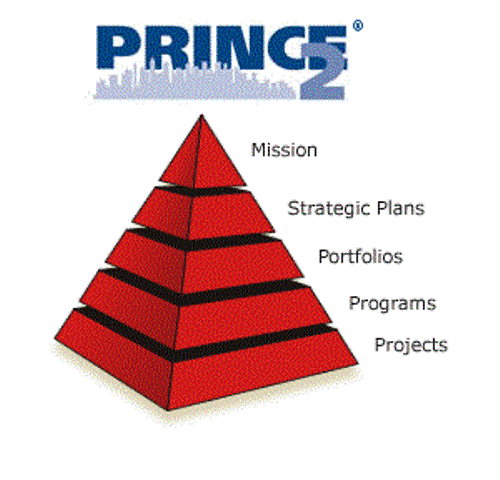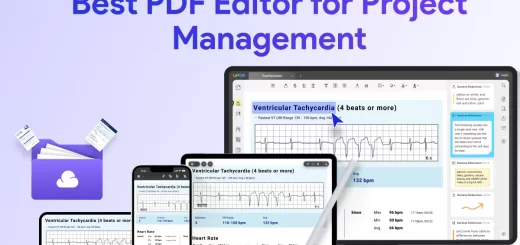7 Best Practices for Outsourcing IT Projects

Outsourcing IT projects is an excellent option for American businesses seeking to focus more on their core aspects, as third-party firms take care of delegated roles. It entails integrating the expertise of skilled information technology professionals, enabling you to decrease costs and increase efficiency.
Full-cycle IT project outsourcing companies like KDIT can assist you in streamlining business operations since you’ll be working with professionals with extensive industrial insights in system analysis, troubleshooting, and cybersecurity.
However, managing outsourced IT projects can be challenging, primarily due to distributed teams and different time zones. Thus, it’d help to know what you should do to ensure project development proceeds as expected.
On that note, below are seven best practices for managing outsourced IT projects.
First, let’s begin with the benefits of outsourcing IT projects.
[hr]
The Benefits of IT Project Outsourcing
Project outsourcing is beneficial since it provides a means for skills specialization, as you’ll be working with information technology professionals with different expertise. Additionally, third-party companies have economies of scale and can afford to deploy more resources than your in-house IT personnel, enabling you to focus on your core operational aspects.
Next, you can expect reliable work since the quality of third-party IT firms is often high since they’re constantly vying for contracts. Plus, you’ll get access to skill sets that will allow you to reduce costs and improve productivity.
Besides, software project outsourcing enables firms to shift project development risks to third-party companies. In turn, you can expect a high level of service quality since software outsourcing firms are more likely to retain their clients if they deliver excellent results.
[hr]
How to Outsource IT Projects
Now that you know the benefits of IT projects outsourcing, let’s take a look at how to outsource projects. Keep in mind that project outsourcing is a continuous process, and there are numerous factors you must consider before making a decision.
Know and understand these outsourcing models:
- Fixed price. The vendor will provide its services and talent pool for an all-inclusive price, which can be high or low based on the quality of work delivered. Also, you should anticipate that your outsourcing partner may exceed deadlines and costs, so keeping your expectations realistic is essential.
- Time and materials. The basic idea is that the company will perform specified functions, with the client paying only for labor. However, you’ll need to fully define the project’s scope to ensure all required services are included.
- Project-based. This model is ideal for projects requiring frequent service updates, as the vendor will provide its services based on the project requirements. Besides, the company will be responsible for action items needed to fulfill project deliverables.
Consider on-shore, offshore, and nearshore development outsourcing on all those models.
Next, we present seven best practices to help you get started.
[hr]
1. Pick the Right Project Outsourcing Company
It’s crucial to select the right managed IT services provider for the success of your project. The candidate should have the technical expertise, experience, and resources to keep your computing systems and networks secure and stable.
For this reason, if you’re in Orange County and looking for the best tech support in OC, choose one with a verifiable track record of excellent performance. You can get such information from previous customers’ reviews. Working with a reliable firm will help your project’s uptime and productivity, guaranteeing it runs efficiently.
Moreover, it’d help ascertain whether they specialize in your business niche. Some industries, like healthcare, have extensive regulations on data handling. An IT outsourcing company with experience in such guidelines will help your business stay compliant, avoid unnecessary fines, and brush shoulders with regulatory authorities.
Below are the essentials you can expect from an IT outsourcing services provider:
- Sustaining uptime 24 hours daily, all year round. Downtime should be avoided at all costs, given the typically impatient nature of today’s customers. Clients who want to do business with you and your site is down can easily switch to competitors and deny you the sales opportunity.
- Safeguarding your enterprise information and techs from cyber-attacks using data backup. Data breaches are costly and can make your firm lose its good reputation. Thus, data safety should be a top priority.
- Ensuring compliance with local regulations and international conventions. You wouldn’t want your premises shut down or your license revoked because of non-compliance.
Assistance from reliable IT companies will ensure you’re always online through their constant remote monitoring and conducting thorough research and evaluation to spot and mitigate potential technical problems.
[hr]
2. Clearly Define Project Objectives and Scope
Before outsourcing any IT company, clearly defining the project’s objectives and scope is necessary. It entails identifying the deliverables, timelines, budgets and challenges likely to be encountered. Doing so ensures the people involved in the project understand what’s expected of them and avoids misunderstanding.
When defining the project objectives and scope, involve all stakeholders, including the outsourcing software development company. It’ll help ensure the provider comprehends the project needs and can provide accurate estimates and proposals.
[hr]
3. Maintain Effective Communication
Effective communication is critical for the success of any outsourced IT project. It involves creating clear communication channels and protocols for timely and accurate information sharing between you and the IT personnel. Thus, you and your IT team members should ensure you do regular status updates, progress reports, and feedback sessions.
You can appoint one person to communicate with the remote outsourced team to ensure operations run smoothly. Regular communication builds trust and transparency between the business and the IT provider. It also helps to keep the project on track and promptly address emerging issues or challenges.
Also, schedule periodic meetings to discuss the milestones achieved and evaluate the project’s progress. It helps keep all parties at par with the developments.
[hr]
4. Have Realistic Expectations
Setting realistic expectations is vital for managing outsourced IT projects. Ensure you give an achievable timeline, budget, and scope of work. In addition, you need to be clear about any potential risks that may arise during the project.
Being transparent with your IT provider will help you and your provider develop practical contingency plans to mitigate potential problems, which can save time and money and ensure the work is completed on time.
Contrarily, setting unrealistic expectations will only lead to disappointments, as the IT services provider will only meet the proposed objectives and timelines. Consulting different department heads and IT firm representatives will help you develop a practical and workable plan.
[hr]
5. Monitor Project Progress and Performance
Monitoring progress and performance is critical. It entails tracking project milestones and checking the IT provider’s performance against the objectives to ensure they’re keeping pace.
In addition, evaluate the quality of their work and check whether they’re operating within the proposed budget. It’ll also help you spot problems promptly and take corrective action.
Your assessment tells you whether it’s worth spending on that specific IT provider. If you aren’t satisfied with the services, it may be prudent to terminate the contract and find a more reliable provider.
[hr]
6. Maintain Flexibility
Flexibility is vital as unexpected changes and problems can arise during project management. Therefore, you must have contingency plans to address probable risks and be open to modifying the project plan with your IT provider as needed.
In addition, it’ll help you avoid starting the project from scratch since you can look for various ways to approach challenges.
[hr]
7. Create a Collaborative Environment
It’s essential to work hand in hand with your IT service provider. You should strive to build strong relationships between your in-house development team and the outsourcing partner, establish a shared vision for the project, and promote open communication and feedback.
Leaving the outsourced IT company to work independently without constant contact isn’t prudent. Collaboration helps ensure your success and quick completion of the project.
[hr]
Conclusion
Managing outsourced IT projects can be challenging, but following these best practices can yield success. It starts by finding the right IT services company with an excellent reputation.
And once onboard, strive to walk every inch of the project with them. Constant communication and collaboration ensure the hired experts meet the business objectives and help to address unforeseen challenges promptly.
FAQ
1. Is It Worth Outsourcing IT Projects to India?
Today, India is one of the most prominent outsourcing markets worldwide, with a projected revenue of US$7.81bn in 2023, according to Statista.
From a cost perspective, it is also among the most cost-effective destinations for outsourcing IT projects. Additionally, Indian companies are more likely to retain firms with IT project outsourcing services than vendors from other countries.
However, you should also be aware of the disadvantages associated with IT project outsourcing to India, including:
- Cultural and linguistic differences. You should expect difficulties communicating with Indian vendors during your IT project development.
- Less experienced staff. It’s also worth noting that many IT professionals from India are relatively inexperienced compared to their counterparts from LATAM and European countries.
- Time zone differences. Most of your IT project development processes will be held in India, so you must endure a time zone difference.
2. Should I Outsource My IT Project to Freelancers?
A freelancer is a self-employed contractor who helps businesses deliver IT projects remotely, primarily on a performance basis. The benefit of hiring freelance developers is that you can pick and choose the individual best suited to your requirements. In addition, there’s no need to commit to one company, which means you can get many ideas from multiple professionals.
On the other hand, freelancers are typically less experienced than IT outsourcing companies. As a result, your project may experience delays or be delivered with flaws. Additionally, you will have little or no control over the development process.
You can try hiring freelance IT specialists on Toptal, Fiverr. Upwork and other marketplaces.











